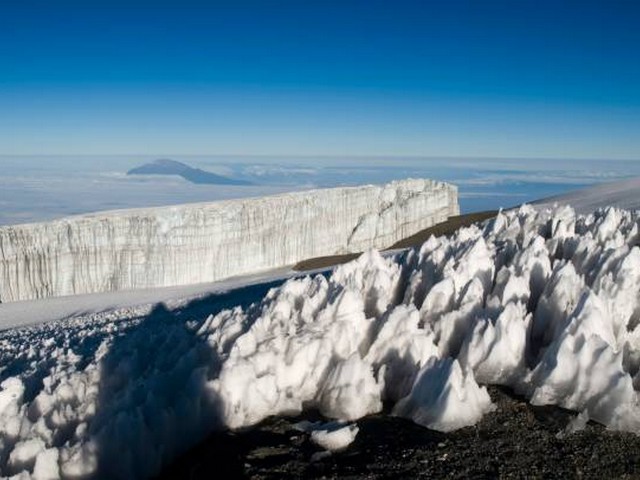How To Select Trekking Gear For Kilimanjaro: Your Ultimate Guide
Introduction: Embark on Your Kilimanjaro Adventure with Confidence
Climbing Mount Kilimanjaro, the rooftop of Africa, is a dream for many adventurers around the world. The journey to its summit passes through lush rainforests, alpine deserts, and finally the arctic zone at the peak. Each of these zones presents unique challenges, and having the right trekking gear is crucial to not only enjoy the trek but to ensure safety and success. At Kilimanjaro Centre for Trekking and Ecotourism (KCTE), we’re not just passionate about guiding you to the top; we’re committed to making sure you’re perfectly equipped for the journey. This guide will walk you through selecting the best trekking gear for your Kilimanjaro adventure, ensuring you’re well-prepared for the trek of a lifetime.
The Importance of Proper Gear Selection
Selecting the right trekking gear for Kilimanjaro is not about packing everything under the sun. It’s about choosing wisely, focusing on quality and suitability for the mountain’s varied environments. Good gear can enhance your ability to withstand the mountain’s challenges, from fluctuating temperatures to rugged terrains. It can mean the difference between a comfortable ascent and a struggle to reach the summit.
H2: Understanding Kilimanjaro’s Climatic Zones
Tropical Rainforest Zone
Your journey begins in the humid, rain-soaked foothills of Kilimanjaro. Here, waterproof and breathable clothing is essential. A quality waterproof jacket and quick-dry pants are recommended.
Heath and Moorland Zone
As the air becomes cooler and drier, layering your clothing becomes crucial. Include fleece jackets or woolen sweaters that you can easily put on or take off.
Alpine Desert Zone
The landscape here is stark with extreme fluctuations in temperature. Daytime can be scorching, while nights are bitterly cold. Sun protection is crucial, as is insulation for the cold nights.
Arctic Summit Zone
The summit night is the toughest, with temperatures far below freezing. This zone requires thermal insulated jackets, thermal pants, and layered accessories like gloves, hats, and scarves to protect against severe cold.
H2: Essential Gear Categories for Kilimanjaro
Footwear: The Foundation of Your Trek
A sturdy pair of waterproof, high-ankle trekking boots is essential. They should be well broken-in to avoid blisters. Pair these with moisture-wicking socks and consider gaiters for additional protection against mud and rain.
Clothing: Layering is Key
- Base Layer: Start with a moisture-wicking synthetic or wool base to keep you dry and warm.
- Mid Layer: Add a fleece or down jacket that you can remove or add depending on the weather.
- Outer Layer: A waterproof, breathable shell jacket and pants are vital to protect against rain and wind.
Headgear and Gloves
A wide-brimmed hat for the sun, a woolen hat for the cold, and a balaclava for wind protection are important. High-quality thermal gloves are crucial for the summit push, possibly with a fleece liner for added warmth.
Backpacks and Poles
A 30-40 liter backpack should suffice for your daily needs, with the rest of your gear carried by porters. Trekking poles are invaluable for both ascent and descent, helping reduce the impact on your knees and improving balance.
Sleeping Equipment
A four-season sleeping bag and an insulated sleeping pad will help you rest better during the cold nights. Comfort and warmth are critical at high altitudes for recovery.
Miscellaneous Essentials
Don’t forget sunglasses for UV protection, a headlamp for night movement, sunscreen, and a personal first-aid kit. Hydration systems (like water bladders) are preferable over bottles for easier access.
H2: Tips for Packing and Preparation
Train With Your Gear
Use your trekking gear during training to familiarize your body with what you will carry and wear. This helps in adjusting the gear for maximum comfort before your actual climb.
Checklists Are Your Friend
Create a checklist based on the zones of Kilimanjaro. Pack according to the list and review it multiple times to ensure nothing essential is forgotten.
Rent or Buy?
While most gear can be rented, items like boots and base layers should be personal and well-fitted. Consider renting heavier, bulkier items to reduce your initial investment.
Summary and Call to Action: Start Your Journey with KCTE
As you prepare for your Kilimanjaro adventure, remember that the right gear is your best ally. At Kilimanjaro Centre for Trekking and Ecotourism (KCTE), we are dedicated to providing not only guidance and support but also expert advice on gear selection. By choosing to climb with KCTE, you’re not just ensuring a well-organized climb; you’re enhancing your chances of success with top-notch gear recommendations and seasoned guides.
Ready to conquer Kilimanjaro? Contact us to book your climb. Let us help you ensure that your trek to the summit is as rewarding and memorable as possible.
Frequently Asked Questions
Q: How much should my backpack weigh?
A: Your daypack should weigh between 5-7 kilograms, containing only what you need for the day.
Q: Can I rent gear in Tanzania?
A: Yes, you can rent many items in Tanzania, including sleeping bags and insulated jackets. However, for hygiene and fit, consider bringing your own base layers, boots, and a few personal items.
Q: What is the most overlooked piece of gear?
A: Many trekkers overlook the importance of a good hat and quality sunglasses. Protection from the sun and cold is crucial throughout the climb.
Q: How do I prevent altitude sickness?
A: While gear does not prevent altitude sickness, ensuring proper hydration can help. Also, discuss preventative medications with your doctor before your trip.
By following these guidelines and selecting the right gear, you’re setting yourself up for an unforgettable ascent of Kilimanjaro. Remember, every piece of gear is a step closer to a successful summit. Let’s get packing, and see you at the top with KCTE!




